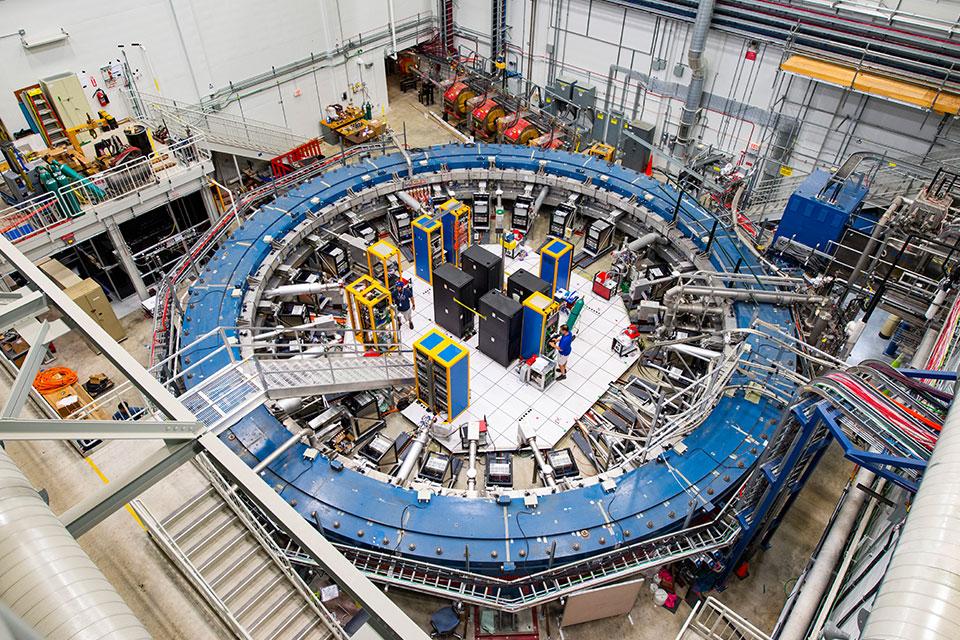The Fermilab Muon g−2 experiment has released its first results showing the muon magnetic dipole moment differs from the theoretical prediction by a significant margin, confirming the results of an earlier experiment. This might be a sign of new phenomena beyond the Standard Model of particle physics.
Muons are fundamental particles, in the same category as electrons, but 200 times heavier. The anomalous magnetic dipole moment, or g-factor is a measure of the muon interaction with a magnetic field. A simple model calculation gives g = 2, but the precise value is shifted slightly away from 2 due to the influence of the cloud of virtual particles and antiparticles surrounding it. The more precise calculation gives g = 2.00233183620(86) (the number in parentheses is the uncertainty).
Deviation from the Standard Model prediction
The last muon g−2 measurement was carried out twenty years ago at the Brookhaven National Laboratory near New York. The result, published in 2006, showed a deviation from the standard model prediction. This has caused a lot of excitement in the particle physics community, as the discrepancy could be due to the influence of particles not yet discovered, but the uncertainty on the measured and calculated value was too high to be sure.
To test the result, the g−2 experiment was relocated to the Fermilab laboratory, near Chicago, a move that required transporting a 14-metre diameter superconducting magnet from New York to Illinois, where it could be connected to a more intense muon beam from the Fermilab accelerator. The instrumentation was improved to further reduce the uncertainties. After years of data taking and analysis, the new result announced on 7 April is g = 2.00233184122(41). This deviates from the theoretical prediction by 4.2 sigma (or standard deviations), meaning there the chance that this is a statistical fluctuation is only 1 in 40,000.
Oxford physicists
Oxford physicists Babak Abi, Farrukh Azfar, and Sam Henry were involved with the experiment and are authors on the paper reporting the first results in Physical Review Letters. Babak Abi and Sam Henry did preliminary work on a new magnetic field calibration probe, which was further developed by collaborators and used to cross check the calibration. Farrukh Azfar was an author on the original Statement of Interest to start a muon programme in the UK. He has worked on the data acquisition and quality monitoring for the track detector, analysed test beam data, and contributed to the simulation effort for the tracker.
The experiment is now analysing further data and will continue running to collect more. This will give an even more precise value for the muon g-factor.
For more details, see the Fermilab website or this cartoon.

